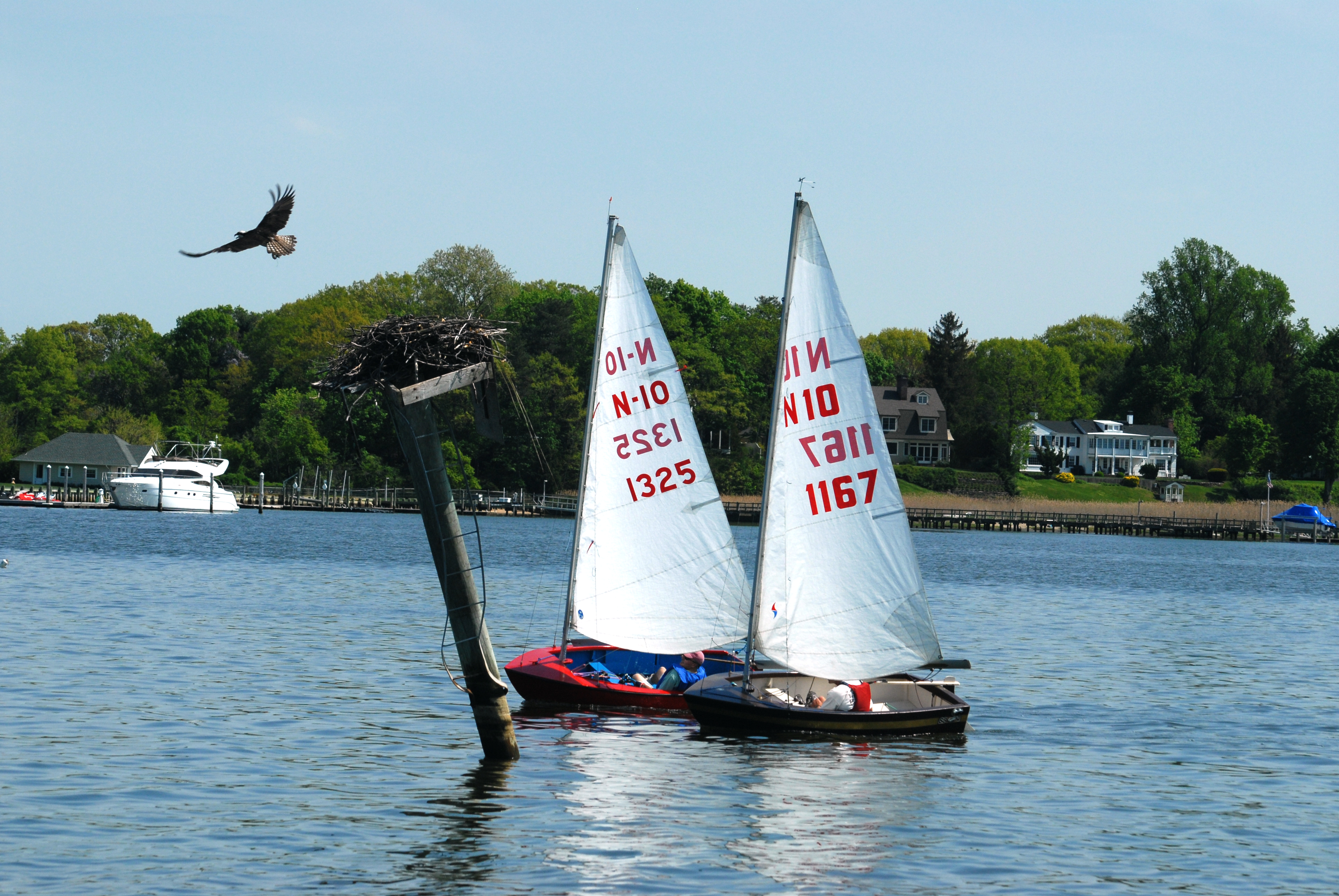N-10 Fleet
Fleet Co-Captains: Taugh Lynch, Dale Barney
The N10 fleet sails from early November through the winter as long as the water is soft. Fleet members share their boats so everyone gets a chance to participate in Sunday racing…. most of it held right out in front of the clubhouse.
Fleet Members Kailey Barney Gary Bode Delan Boyce Kelly and Dan Busch Joe Cahill Pat Corr Andree Friel John Hurley Bill Jaegar Kate Kennedy Dot and Paul Lucyk Taugh Lynch Eileen Nociolo Doug Roberts Paul Scalisi Frank Scalisi Dan Vought Bob Winters Andy Zangle |
50 YEARS!! - FROSTBITING AT MONMOUTH BOAT CLUB In 1970 a group of sailors from Monmouth Boat Club (MBC) and the Shrewsbury Sailing & Yacht Club (SSYC) decided to start frostbiting in the twin river area - the Navesink River (a.k.a. the North Shrewsbury) and the South Shrewsbury River. There were fleets of Turnabouts at both clubs so they chose this as the boat to sail. It was decided to sail the month of November at SSYC and the month of December at MBC. Since the frostbiting series would be sailed at both clubs they formed a group called the Twin River Frostbite Association.
Since participation from SSYC sailors declined and the SSYC clubhouse was closed for the winter the fleet decided to find another site to sail in 1974. The Long Branch Ice Boat and Yacht Club welcomed the group. The fleet grew in those years and literally outgrew this sailing area with its shallow spots. The fleet moved the entire series to MBC about 1980 thus becoming an official MBC fleet. In the early days, most of the boats were wooden with just a couple of fiberglass boats. However, the fiberglass boats were slower than the wooden boats. Some sailors believed the speed problem was with the depth of the centerboard. In 1981, the Admiral Farragut Academy in Beachwood, NJ decided to sell their fleet of nine N10’s. A letter was sent to local sailing clubs, but due to the insurgence of the Optimists class for Jr. Programs, none seemed interested. Frostbite sailors Denis Farley and Sandy Huntsman purchased -Our thanks to Denis Farley for sharing in-depth details making this article possible. |

 the AFA fleet. Determined they had the solution to making the glass boats competitive with the wooden boats, the pair arranged to have new stainless-steel centerboards made and installed at the maximum depth. The idea that this would solve the speed issue was met with some skepticism. However, on opening day of the series, the fiberglass boats won five of six races and the switch to fiberglass began. The fleet is all fiberglass today except for one wooden boat.
the AFA fleet. Determined they had the solution to making the glass boats competitive with the wooden boats, the pair arranged to have new stainless-steel centerboards made and installed at the maximum depth. The idea that this would solve the speed issue was met with some skepticism. However, on opening day of the series, the fiberglass boats won five of six races and the switch to fiberglass began. The fleet is all fiberglass today except for one wooden boat.